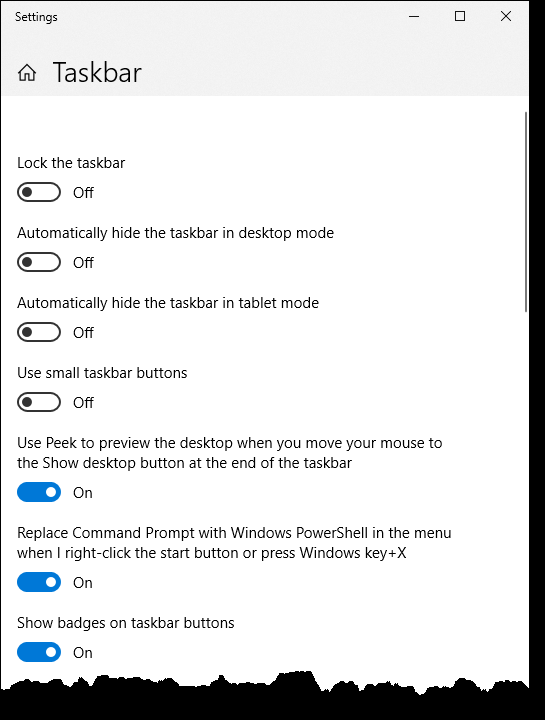With multiple displays, you can control how the Taskbar looks on those displays. You have a few choices. You can have the Taskbar be on each monitor, you can set things up so that the Taskbar resides only on your primary monitor, and you can control which buttons appear on different monitors' Taskbars.
To arrive at the place that lets you customize your Taskbar, right-click an empty space on your Taskbar and select Taskbar Settings from the resulting Context menu. The following window appears: (See Figure 1.)

Figure 1. Some Taskbar settings.
What is shown in the figure are the top Taskbar settings. To get to the ones dealing with multiple displays you need to scroll down a bit. When you get there, you'll see an on/off switch that determines whether your Taskbar is shown on all displays or only on the main one. Next is a drop-down list where you can set how Taskbar buttons are shown: All taskbars, Main taskbar and taskbar where window is open, or Taskbar where window is open.
There is one final drop-down list, where you can set how buttons are to be combined on other taskbars. You can combine buttons on other Taskbars: Always (hide labels), When taskbar is full, or Never.
![]() This tip (13587) applies to Windows 10.
This tip (13587) applies to Windows 10.
When you install Windows, it installs desktop themes appropriate to where you live. You can access a number of themes ...
Discover MoreDon't like the sounds that Windows has chosen to play when system events occur? Here's how to change the sound theme that ...
Discover MoreStorage Sense can free up limited storage space on your computer automatically. Make sure you don't have it delete files ...
Discover More2018-11-21 15:03:51
Bud Ingersoll
I appreciate placing the icon in the "taskbar where the window is open". Quite useful.
Copyright © 2025 Sharon Parq Associates, Inc.
Comments